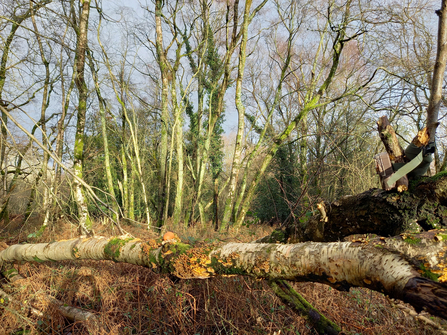How did Pine Martens get to Gwent?
Back in 2019-2021, 35 pine martens were reintroduced into the Forest of Dean under Project Pine Marten, run by Gloucestershire Wildlife Trust in collaboration with Forestry England, Vincent Wildlife Trust, Woodland Trust, Forest Research and Forest Holidays. Thanks to past monitoring efforts by the Gloucestershire team and Natural Resources Wales, we were able to confirm that some of the pine martens had crossed the border into Gwent and have even been confirmed to be breeding here!
How are we Monitoring them?
Previous monitoring efforts have been in targeted areas in which pine martens were thought to occur. Although this is great for confirming their presence, a more systematic methodology covering a wider area of Gwent was needed to provide a better understanding of how and where the pine martens are occurring in the county.
Since the summer of 2023, we have been working hard to establish a more thorough monitoring system. Working with Gloucestershire Wildlife Trust has allowed us to learn from their considerable knowledge base and survey experience, thus ensuring consistency in survey methodology.
We have devised a grid system, by which Gwent is split into 2x2 km squares and all suitable habitat identified via satellite imagery. We are now working to set up a camera trap in each grid, rotating them around all the identified grids until they have all been covered. A camera is in place for just 6 weeks and is baited with tasty treats that are irresistible to a passing pine marten. If there is a pine marten in the area, it will pick up the scent of the sardines or peanut butter and ensure to pay our camera a visit! The cameras are checked once a week to make sure they are still working and to top up the bait.
Only having the camera in place for 6 weeks ensures that animals don’t become reliant on it as a food source and allows us to cover a much wider area. This work is only made possible thanks to wonderful landowners and volunteers.



